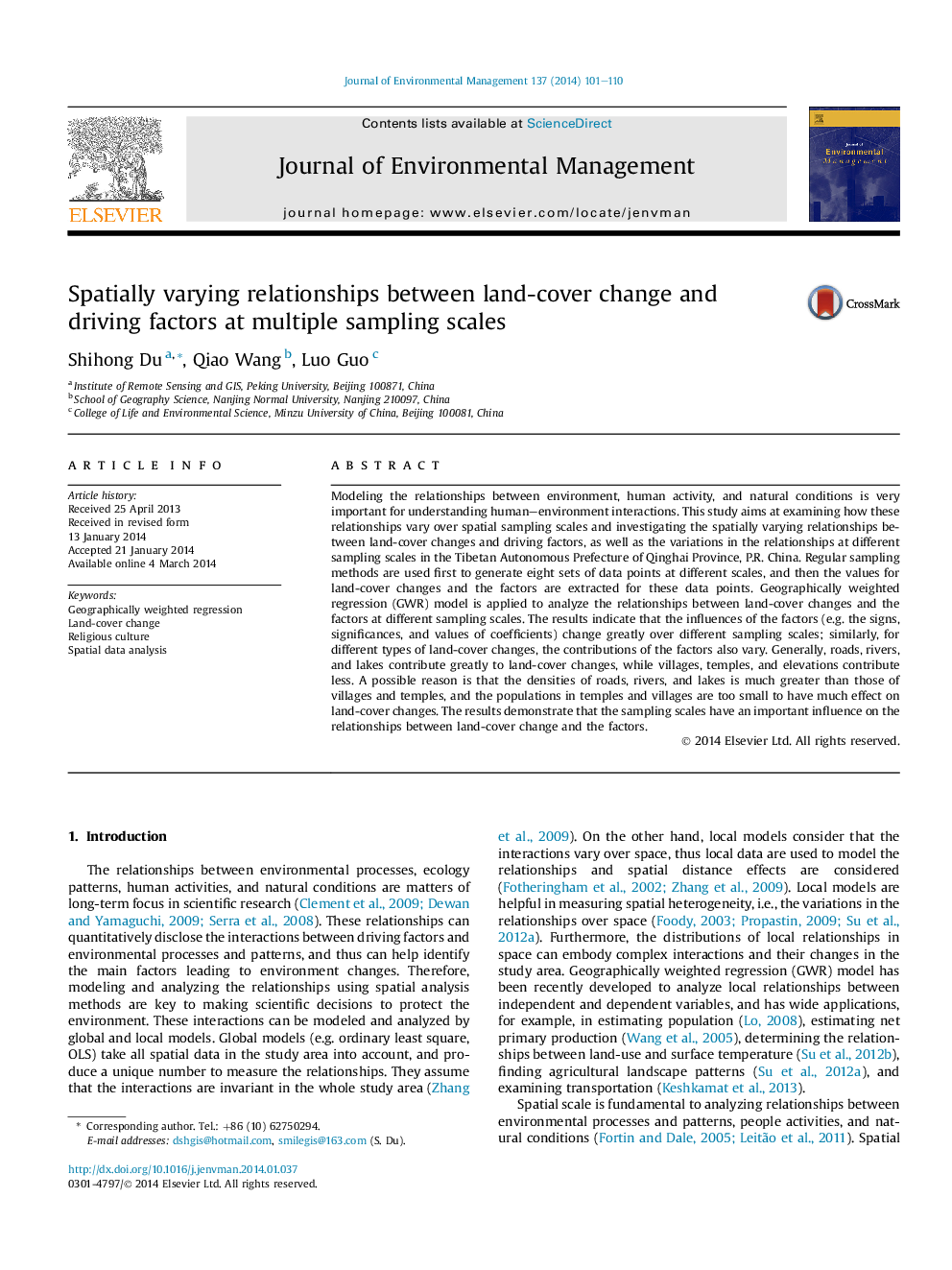| Article ID | Journal | Published Year | Pages | File Type |
|---|---|---|---|---|
| 1055732 | Journal of Environmental Management | 2014 | 10 Pages |
•The dependent and independent variables are extracted at multiple sampling scales.•The local relationships between land-cover and factors are examined at multiple scales.•Sampling scales have important influences on GWR estimations.•The contributions of factors to land-cover change vary over sampling scales.•The contributions of factors vary over the types of land-cover change.
Modeling the relationships between environment, human activity, and natural conditions is very important for understanding human–environment interactions. This study aims at examining how these relationships vary over spatial sampling scales and investigating the spatially varying relationships between land-cover changes and driving factors, as well as the variations in the relationships at different sampling scales in the Tibetan Autonomous Prefecture of Qinghai Province, P.R. China. Regular sampling methods are used first to generate eight sets of data points at different scales, and then the values for land-cover changes and the factors are extracted for these data points. Geographically weighted regression (GWR) model is applied to analyze the relationships between land-cover changes and the factors at different sampling scales. The results indicate that the influences of the factors (e.g. the signs, significances, and values of coefficients) change greatly over different sampling scales; similarly, for different types of land-cover changes, the contributions of the factors also vary. Generally, roads, rivers, and lakes contribute greatly to land-cover changes, while villages, temples, and elevations contribute less. A possible reason is that the densities of roads, rivers, and lakes is much greater than those of villages and temples, and the populations in temples and villages are too small to have much effect on land-cover changes. The results demonstrate that the sampling scales have an important influence on the relationships between land-cover change and the factors.
